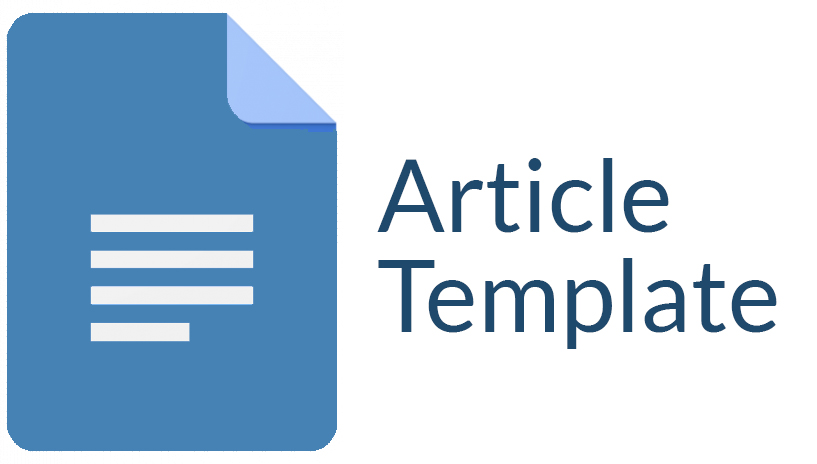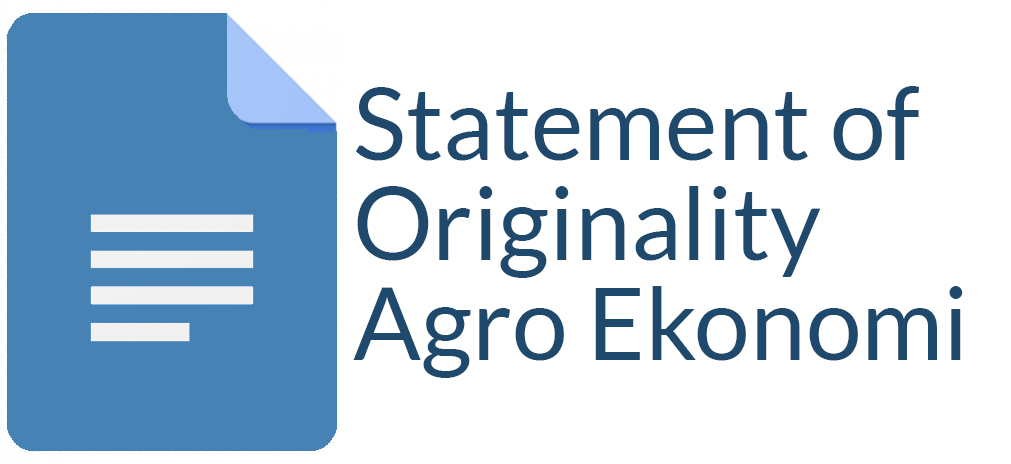Farmers’ Willingness to Accept a Compensation to Protect Agricultural Land Sustainability in Peri-Urban Areas of Pekalongan City
Imade Yoga Prasada(1), Masyhuri Masyhuri(2*)
(1) Program Studi Ekonomi Pertanian, Fakultas Pertanian Universitas Gadjah Mada
(2) Program Studi Ekonomi Pertanian, Fakultas Pertanian Universitas Gadjah Mada
(*) Corresponding Author
Abstract
Keywords
Full Text:
PDFReferences
Amare, D., Mekuria, W., T/wold, T., Belay, B., Teshome, A., Yitaferu, B., … Tegegn, B. (2016). Perception of local community and the willingness to pay to restore church forests: the case of Dera district, northwestern Ethiopia. Forests, Trees and Livelihoods, 25(3), 173–186. https://doi.org/10.1080/14728028.2015.1133330
Amegnaglo, C. J., Anaman, K. A., Mensah-Bonsu, A., Onumah, E. E., & Amoussouga Gero, F. (2017). Contingent valuation study of the benefits of seasonal climate forecasts for maize farmers in the Republic of Benin, West Africa. Climate Services, 6(2017), 1–11. https://doi.org/10.1016/j.cliser.2017.06.007
Aragie, T., & Genanu, S. (2017). Level and determinants of food security in North Wollo Zone (Amhara Region–Ethiopia). Journal of Food Security, 5(6), 232–247. https://doi.org/10.12691/jfs-5-6-4
Aulifia, A., Subejo, S., & Harsoyo, H. (2016). Persepsi anggota grup Facebook “Komunitas Hidroponik Jogja (Hi-Jo)” terhadap pengembangan hidroponik. Agro Ekonomi, 27(2), 165–182. https://doi.org/10.22146/jae.22691
BPS. (2018). Kota Pekalongan Dalam Angka. Kota Pekalongan, Jawa Tengah: Badan Pusat Statistik Kota Pekalongan.
Chen, M., Zhang, H., Liu, W., & Zhang, W. (2014). The global pattern of urbanization and economic growth: Evidence from the last three decades. PLoS ONE, 9(8), 1–15. https://doi.org/10.1371/journal.pone.0103799
Faridhavin, U., Witjaksono, R., & Harsoyo, H. (2016). Persepsi pendamping terhadap pelaksanaan Program Upsus Pajale di Daerah Istimewa Yogyakarta. Agro Ekonomi, 27(2), 197–214. https://doi.org/10.22146/jae.22700
Gardi, C., Panagos, P., Van Liedekerke, M., Bosco, C., & de Brogniez, D. (2015). Land Take and Food Security: Assessment of land take on the agricultural production in Europe. Journal of Environmental Planning and Management, 58(5), 898–912.
Ghazouani, T. (2013). The capital structure through the Trade-Off Theory : Evidence from Tunisian firm. International Journal of Economics and Finance, 3(3), 625–636.
Guneralp, B., Lwasa, S., Masundire, H., Parnell, S., & Seto, K. C. (2017). Urbanization in Africa : challenges and opportunities for conservation. Environmental Reearch Letters, 13(2018), 1–9.
Harini, R., Yunus, H. S., Kasto, & Hartono, S. (2012). Agricultural land conversion: Determinants and impact for food sufficiency in Sleman Regency. Indonesian Journal of Geography, 44(2), 120–133.
Haryanto, L. I., Masyhuri, M., & Irham. (2018). The policy analysis matrix in measuring competitiveness of maize farming system in marginal areas. Jurnal Agro Ekonomi, 29(2), 244–260.
Jiang, L., & Zhang, Y. (2016). Modeling Urban Expansion and Agricultural Land Conversion in Henan Province, China: An Integration of Land Use and Socioeconomic Data. Sustainability, 8(9), 920. https://doi.org/10.3390/su8090920
Jiaran, W., Moucheng, L., Lun, Y., & Qingwen, M. (2018). Factors affecting the willingness of farmers to accept eco-compensation in the Qianxi Chestnut Agroforestry System, Hebei. Journal of Resources and Ecology, 9(4), 407–415. https://doi.org/10.5814/j.issn.1674-764x.2018.04.008
Lawalata, M., Darwanto, D. H., & Hartono, S. (2017). Risiko Usahatani Bawang Merah di Kabupaten Bantul. Agrica (Jurnal Agribisnis Sumatera Utara), 10(1), 56–73. Retrieved from http://ojs.uma.ac.id/index.php/agrica
Motta, R. S. da, & Ortiz, R. A. (2018). Costs and perceptions conditioning willingness to accept payments for ecosystem services in a Brazilian Case. Ecological Economics, 147(May 2017), 333–342. https://doi.org/10.1016/j.ecolecon.2018.01.032
Nyongesa, J. M., Bett, H. K., Lagat, J. K., & Ayuya, O. I. (2016). Estimating farmers’ stated willingness to accept pay for ecosystem services: Case of Lake Naivasha watershed Payment for Ecosystem Services scheme-Kenya. Ecological Processes, 5(1), 1–15. https://doi.org/10.1186/s13717-016-0059-z
Pham, V. C., Pham, T. T. H., Tong, T. H. A., Nguyen, T. T. H., & Pham, N. H. (2015). The conversion of agricultural land in the peri-urban areas of Hanoi (Vietnam): Patterns in space and time. Journal of Land Use Science, 10(2), 224–242. https://doi.org/10.1080/1747423X.2014.884643
Prasada, I. M. Y., Dhamira, A., & Nugroho, A. D. (2018). Supply Response of Paddy in East Java : Policy Implications to Increase Rice Production. AGRARIS: Journal of Agribusiness and Rural Development Research, 4(2), 129–138.
Purbiyanti, E., Muhammad, Y., & Indri, J. (2017). Konversi lahan sawah di Indonesia dan pengaruhnya terhadap kebijakan Harga Pembelian Pemerintah ( HPP ) gabah/beras. Jurnal Manajemen & Agribisnis, 14(3), 209–217.
Septian, D., & Anugrah, G. C. (2014). Perindungan petani melalui konsep asuransi pada Gabungan Kelompok Tani Desa Argorejo, Kabupaten Bantul. Jurnal Penelitian Hukum, 1(2), 92–108.
Sudirman, S. (2012). Valuasi ekonomi dampak konversi lahan pertanian di pinggiran Kota Yogyakarta. AGRIKA, 6(1), 103–125.
Suharyanto, S., Rinaldy, J., & Ngurah Arya, N. (2015). Analisis Risiko Produksi Usahatani Padi Sawah. AGRARIS: Journal of Agribusiness and Rural Development Research, 1(2), 70–77. https://doi.org/10.18196/agr.1210
Sun, Y., & Akiyama, T. (2018). An empirical study on sustainable agriculture land use right transfer in the Heihe River Basin. Sustainability (Switzerland), 10(2), 1–13. https://doi.org/10.3390/su10020450
Szabo, S. (2016). Urbanisation and food insecurity risks: Assessing the role of human development. Oxford Development Studies, 44(1), 28–48. https://doi.org/10.1080/13600818.2015.1067292
Xiangzheng, D., Zhihui, L., & Gibson, J. (2016). A review on trade-off analysis of ecosystem services for sustainable land-use management. Journal of Geographical Sciences, 26(7), 953–968. Retrieved from http://www.geogsci.com/article/2016/1009-637X/38416#outline_anchor_1
Yasar, M., & Siwar, C. (2016). Paddy Field Conversion in Malaysia : Issues and Challenges. Rona Teknik Pertanian, 9(2), 168–177.
Article Metrics
Refbacks
- There are currently no refbacks.
Copyright (c) 2018 Agro Ekonomi

This work is licensed under a Creative Commons Attribution-ShareAlike 4.0 International License.
View My Stats











